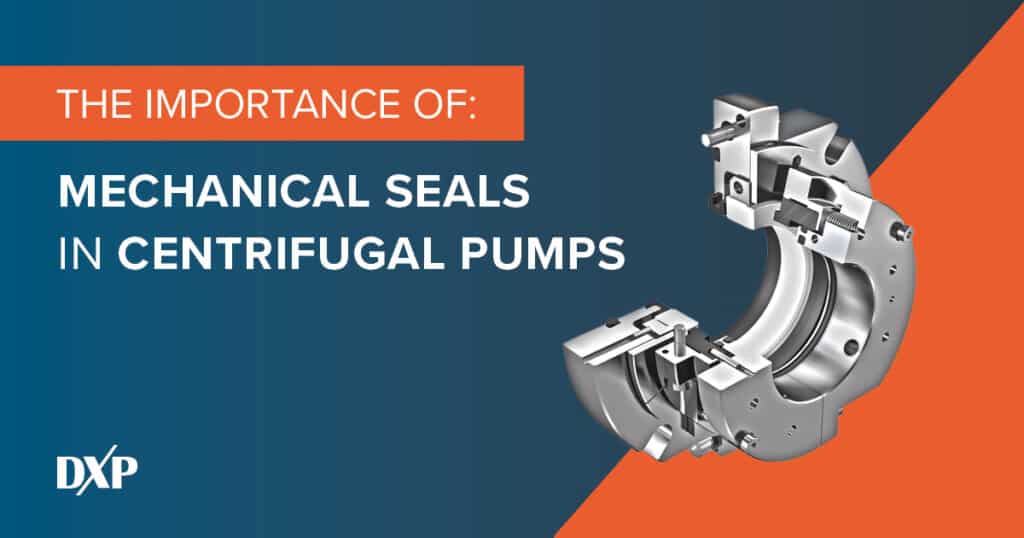Mechanical seals are designed to preserve the integrity of the pump system. They prevent fluid leaks and maintain a proper pressure seal within any centrifugal pump. The rotating shaft enters the back end of the pump casing by way of a stuffing box or seal chamber. To achieve better performance, safety, and durability, it is critical to select the right size and type of mechanical seal for your specific centrifugal pump, as well as for your pump application.
How Do Mechanical Seals Work?
Mechanical seals feature two flat and smooth seal faces that work in unison. One will rotate with the shaft while the other remains stationary with the pump casing. Each seal face is connected to its respective halves with secondary seals, such as gaskets or o-rings. Mechanical seals can provide sealing flexibility to adjust for any slight misalignments while reducing potential wear on the various components.
Maintenance is Key
Proper lubrication is key for healthy mechanical seals. The lubricating fluid will actually break down during operation, which creates a small release of vapor. It is natural and necessary for this vaporization to occur in a correctly functioning mechanical seal. Lubrication is an important step during mechanical seal installation and ongoing maintenance. Inspecting your mechanical seals is vital, and they should be adjusted, relubricated, or replaced as needed to keep your centrifugal pump leak-free.
Mechanical Seal Installation
There are several key steps for installing a new mechanical seal on your centrifugal pump. You will first need to shut off the pump motor and disconnect the power supply to ensure it cannot start up during maintenance. Then, all process fluid should be isolated and then drained from the pump housing.
Different centrifugal pump designs will have different ways to access the mechanical seal, some may be more complex than others. Consult the owner’s manual and follow the necessary procedures to safely access and remove the old mechanical seal. The impeller will also need to be removed during this stage. Ultimately, you will be able to remove both the rotary and stationary mechanical seal halves.
Selecting the Right Mechanical Seal
Make sure everything is clean and properly aligned during the installation of a new mechanical seal. Which mechanical seal is best for your pump may depend on a number of factors:
• Pump manufacturer
• Pump size
• Pump configuration
• Process fluid
• Specific performance characteristics
There are a wide variety of mechanical seals for centrifugal pumps from leading manufacturers like Flex-A-Seal, John Crane, Flowserve, and more. They are available in different sizes and configurations, as well as unique construction and coating materials to handle various process fluids.
Chemicals and liquids with acidic or corrosive qualities may call for a more robust mechanical seal made of a certain abrasion-resistant material. A standard seal solution may be adequate for less-aggressive fluid applications. It is very important to understand your application when it comes to selecting the best mechanical seal.
Reliable Performance
Once the mechanical seal is installed and everything is put back in place with proper alignment, you can refill and restart the pump. Monitor it carefully, it is working properly and there are no fluid leaks coming from the new mechanical seal. Test and adjust as much as necessary before running at full capacity. Continue to monitor and maintain your mechanical seals and all pump components for reliable performance and extended equipment lifespan.
For help with mechanical seal selection, installation and maintenance, contact the pump experts at DXP Pacific. We’re here to help with all of your pump services and we can match you with the best mechanical seal for your centrifugal pump and fluid application.

